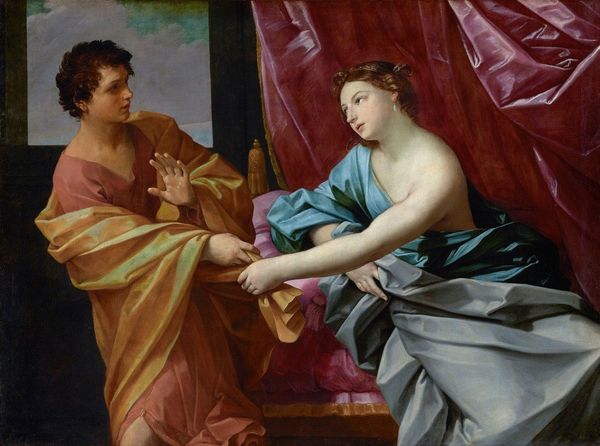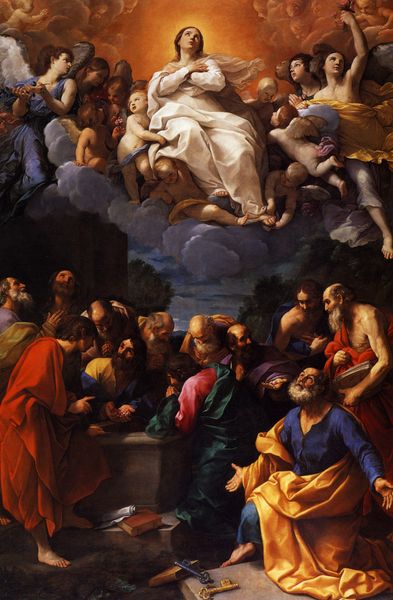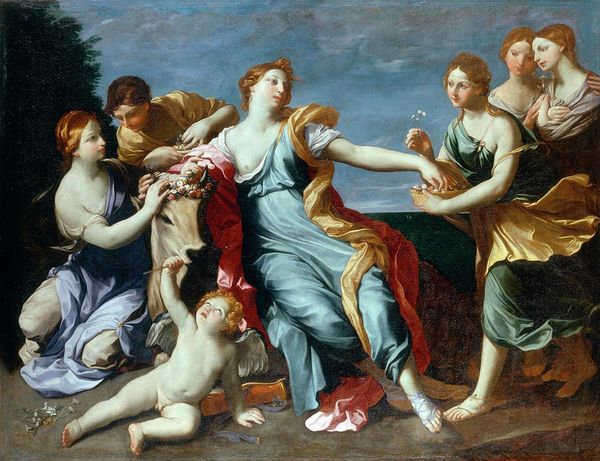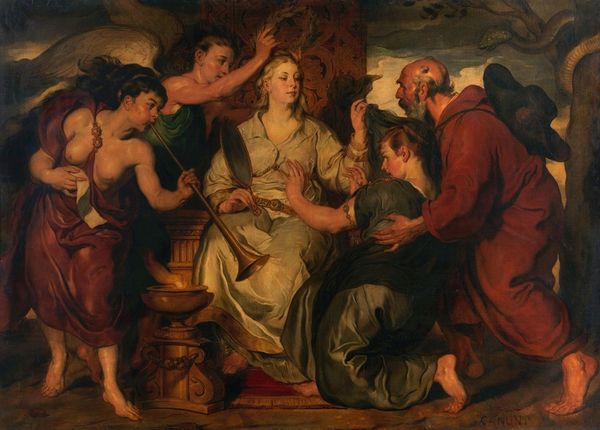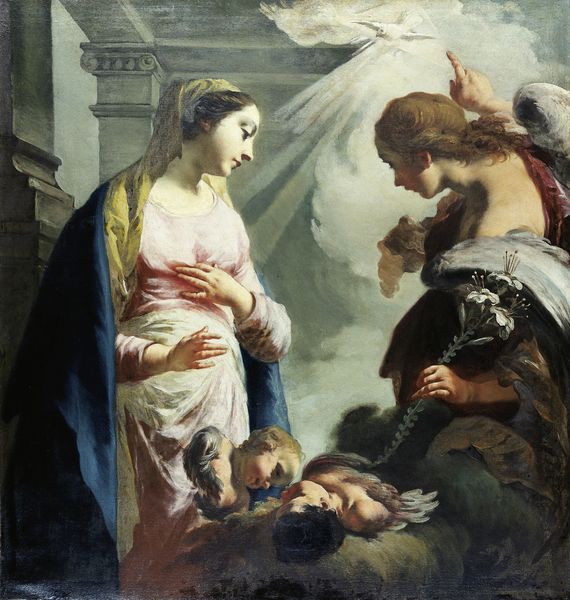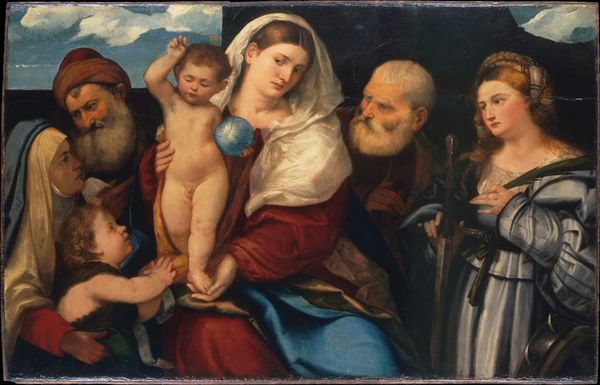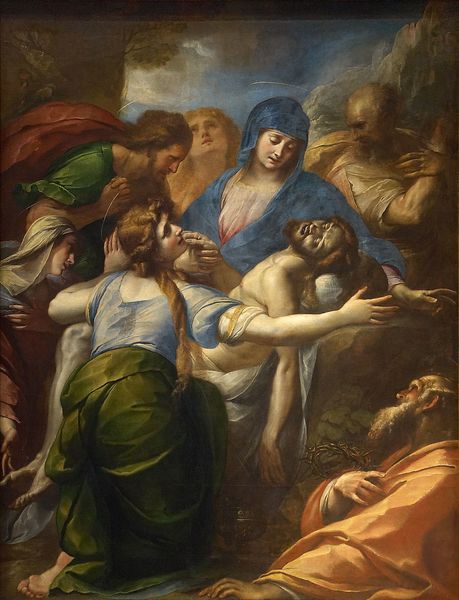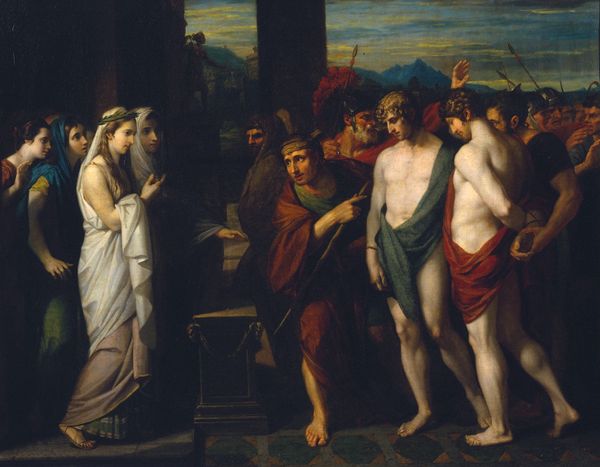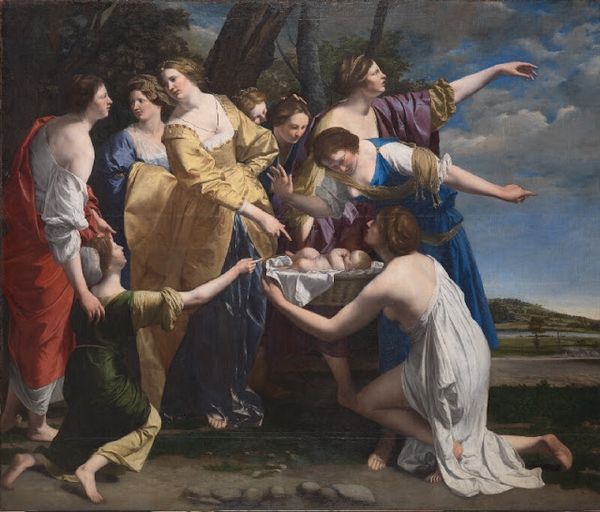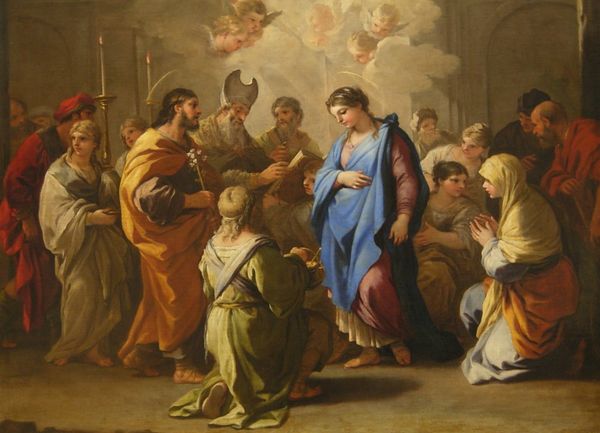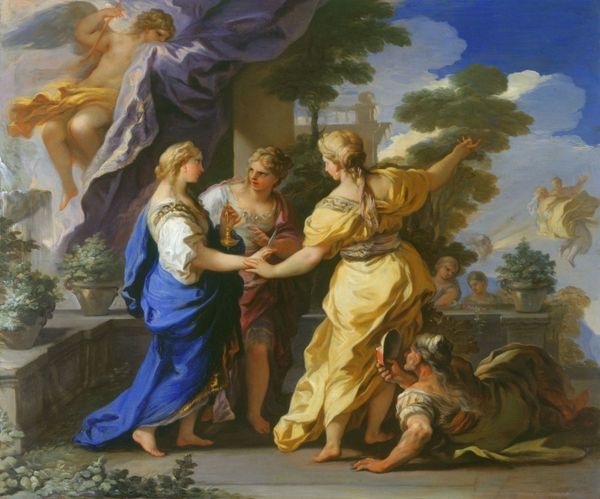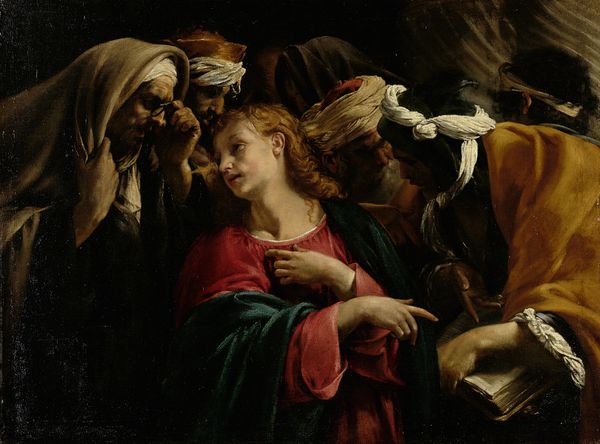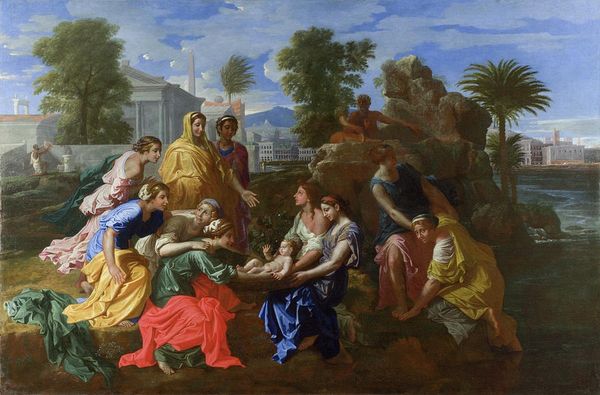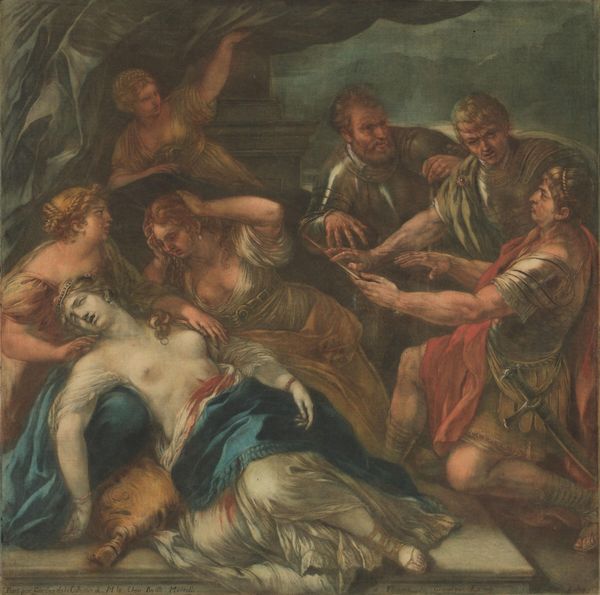
The Virgin and Child with Four Saints 1518
0:00
0:00
titian
Gemäldegalerie Alte Meister, Dresden, Germany
painting, oil-paint
#
portrait
#
high-renaissance
#
painting
#
oil-paint
#
figuration
#
christianity
#
history-painting
#
italian-renaissance
#
virgin-mary
#
christ
Copyright: Public domain
Titian painted this oil on canvas, The Virgin and Child with Four Saints, during the Italian Renaissance when Venice was a major center of artistic innovation. This composition reflects the era's fascination with classical antiquity, as seen in the architectural elements. Yet it also reinforces the Church's dominant role in society. The idealized figures, the Virgin's serene expression, and the inclusion of saints all reinforce religious doctrine. Titian’s use of color and light served to evoke emotional responses, drawing viewers into the sacred scene and solidifying the Church’s social and spiritual authority. Art historians use varied sources – from theological texts to artists’ biographies and patronage records – to uncover the complex web of meanings embedded in paintings like this. Religious art served a public role, reinforcing social norms and power structures. By studying such works, we gain insights into the social conditions that shaped artistic production during this transformative period.
Comments
No comments
Be the first to comment and join the conversation on the ultimate creative platform.
